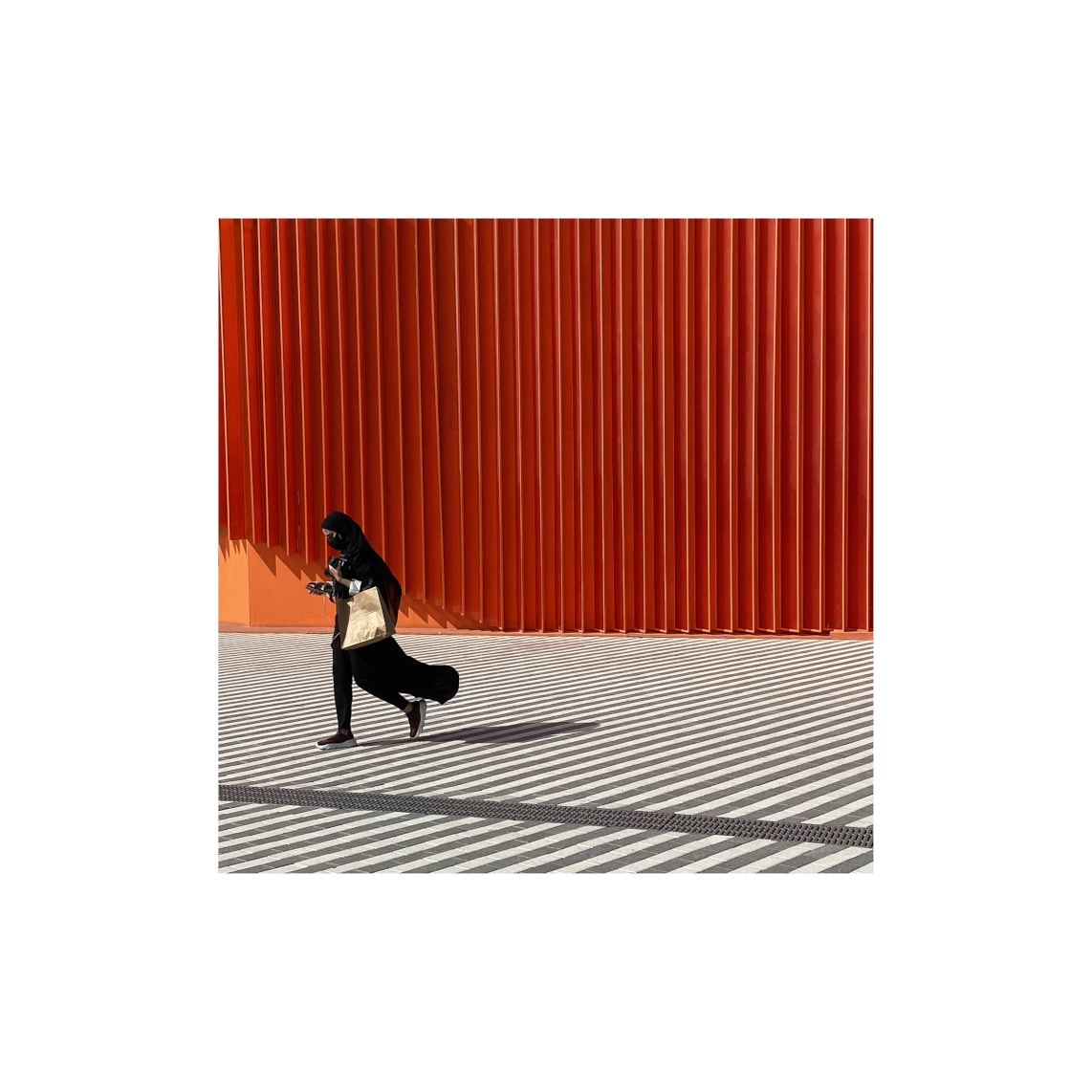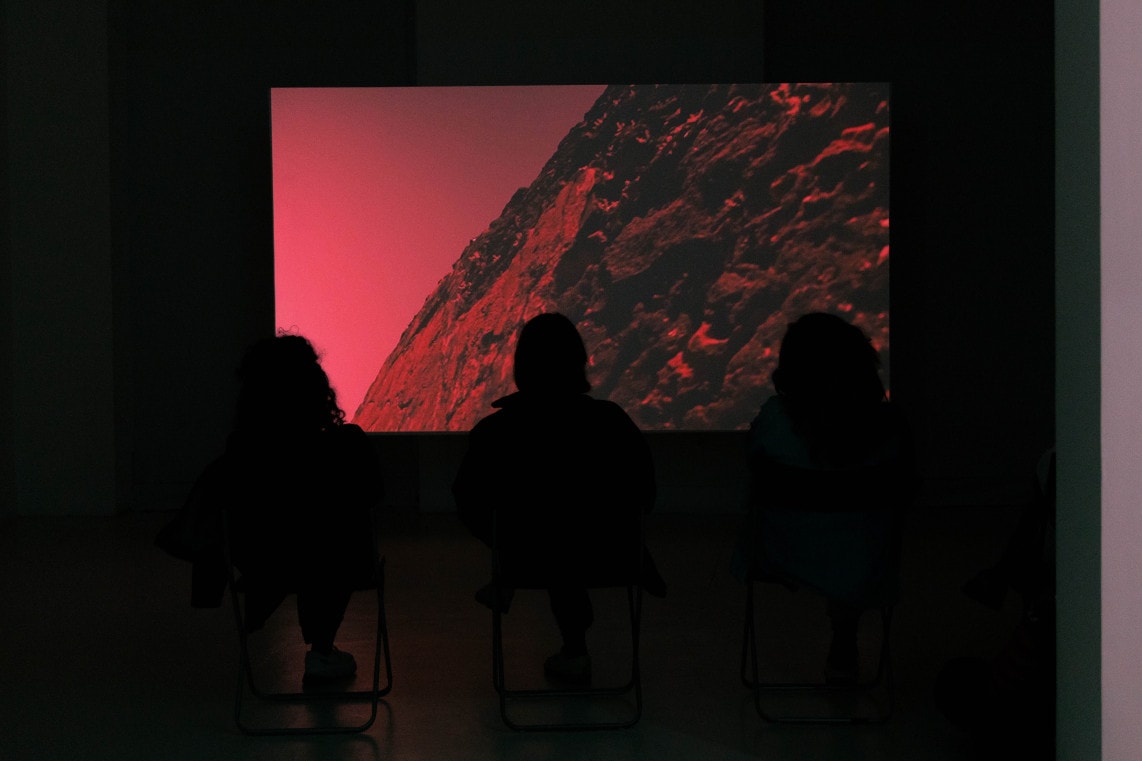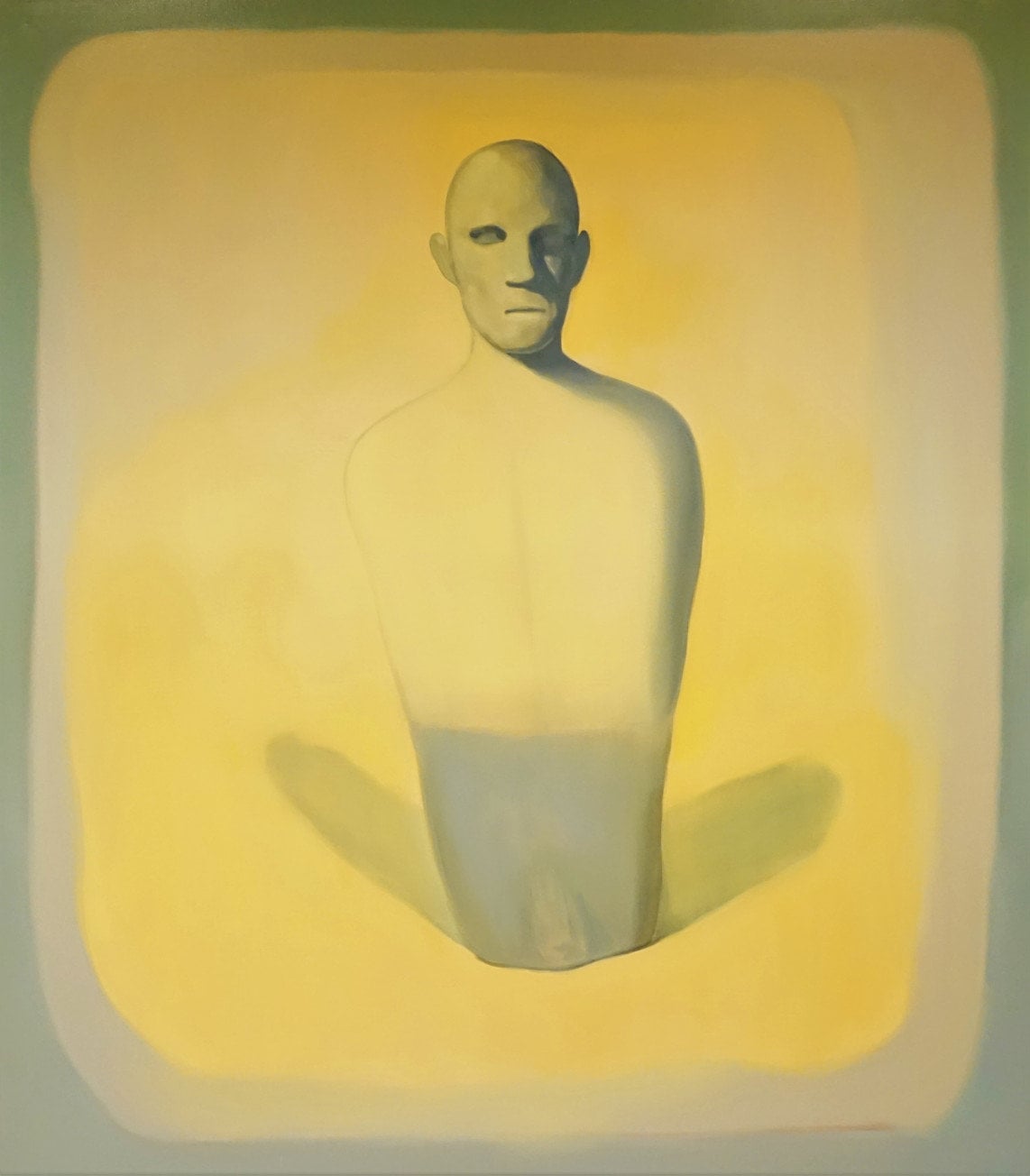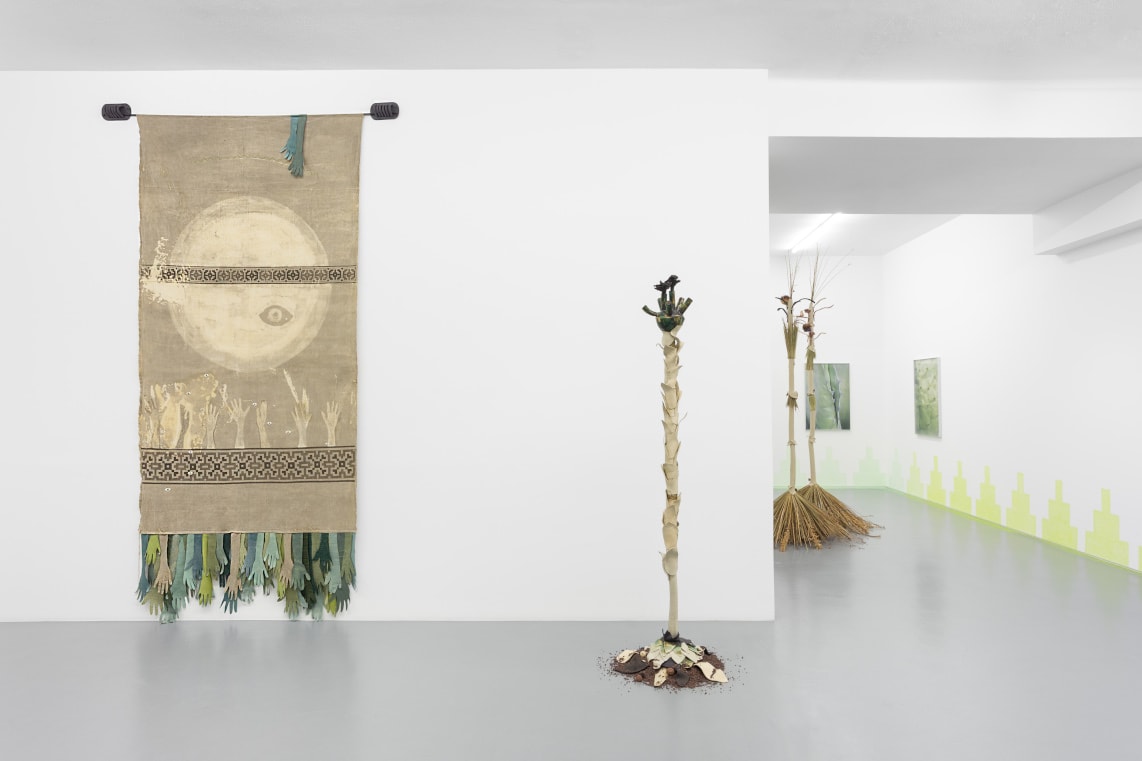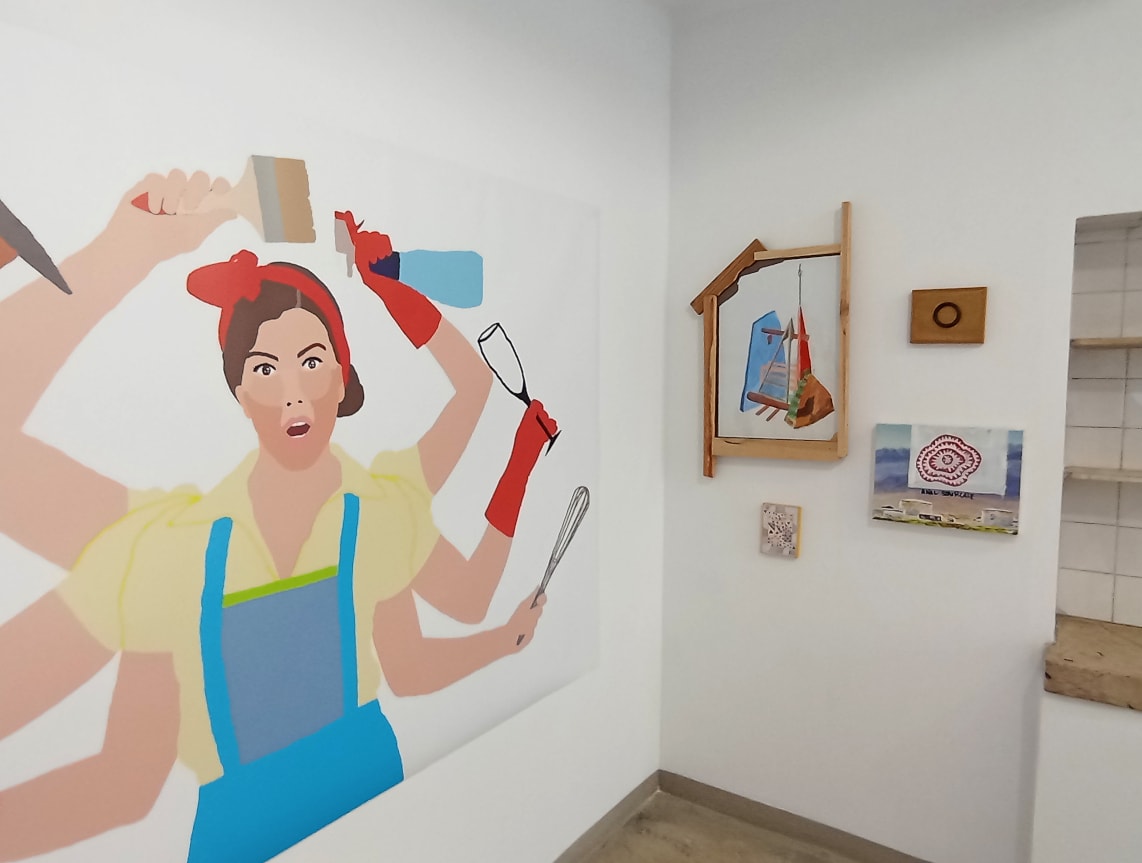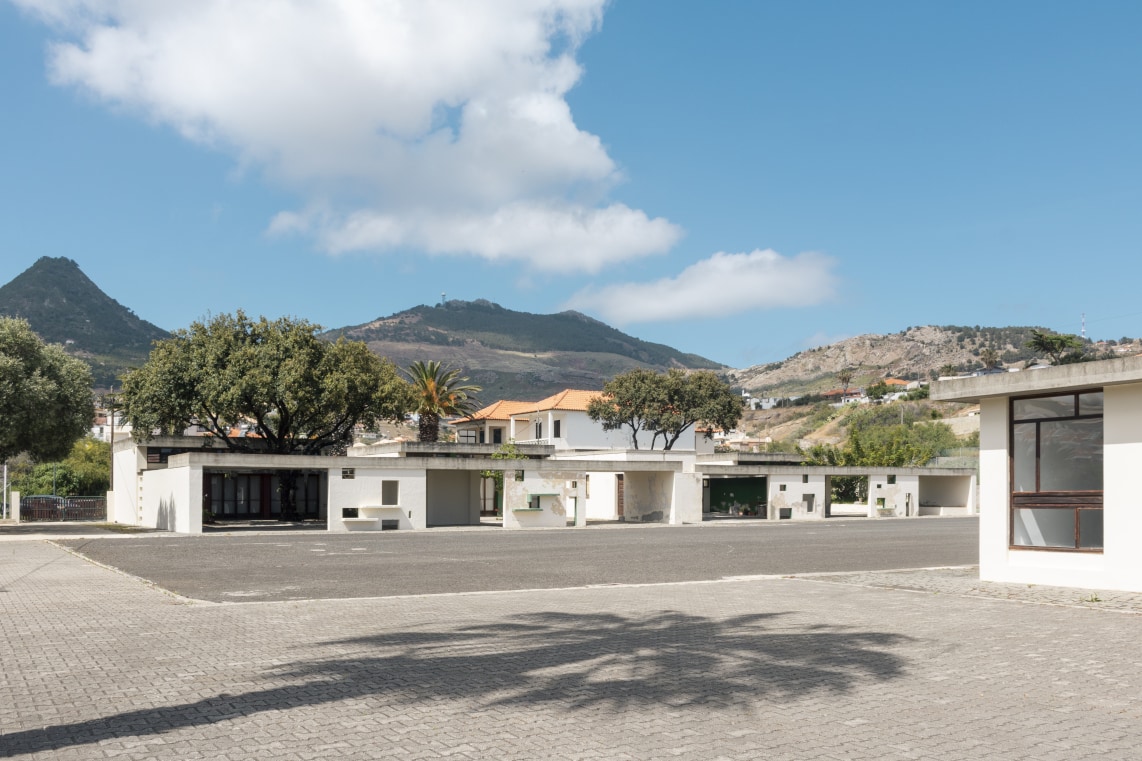- Lived
When I was a child, I often remember going to a toy shop with two doors. One was just over a metre high; the other was normal size for adults to enter. I liked to walk through the small door because it suited my size – in an overwhelmingly large world, that door understood me.
On 14 October, at the seminar Despoletar o Agir organised by Porta 33 for the revitalisation of Porto Santo Village School, I remembered this story. In the first panel, Ainhoa Graupera, I noted that Raul Chorão Ramalho’s architectural project followed these features. It spoke of how little doors were opened for the children in the building, and openings for the adults to play too, to participate, to return to that first, unexpected spatial awareness, becoming children again. Compared with the toy shop, the building went one step further in interacting, in an empathic gesture that allows adults too the possibility of being children – or slyly confessing to us that they never ceased to be. This age and life experience plurality, along with the need to reformulate thinking, made these interventions, conferences, exhibitions in Porto Santo necessary, in the heat of mid-October – everyone could be part of the process. This is Porta 33’s future mission – a Madeiran cultural association, founded in Funchal over 30 years ago, now headed by the couple Maurício Pestana Reis and Cecília Vieira de Freitas. Since 2019, they are responsible for the school’s management and revitalisation, following its closure the previous year. They want a utopian, free, transformative project, without neglecting the legacy of a building that had been a teaching facility since 1967, a place of memories and cherished by the community. This was the starting point for workable solutions: how to intervene culturally in a renowned building in a locality, without reneging on the population’s wishes and needs?
Possible answers or priorities in this process, still in verb form, appeared in the titles of each panel: implicate, learn, care, include. The purpose was to move from words to action, in an exchange of ideas between speakers, teachers, mayors and anyone else who wished to take part.
On the conference’s first day, the process was more exhibition-like: plastic artists, architects, teachers, most of them invited, spoke about possibilities for that school, based on projects they have developed for other places, and trying to understand the involvement and intentions of Raul Chorão Ramalho’s project. Teaching dynamics were discussed, the possibilities of deconstructing them, moving towards an oral, unformatted place; or keeping them the same, as the main foundation, in its pros and cons, for the students’ future. There were also reflections on past and future, the way of articulating an individual experience with a collective learning, the aggregating potential of a school institution, the relationship of the building with the other works of Chorão Ramalho. Or how its modern and utopian hybridism lies in this new project’s motivations. The ideas were creative and reflective, several ideas in search of a broadening, mental, reformulating complementarity.
A series of three surveys and a recipe were distributed by Pedro Jervell to all the audience members: a survey on memory, another on imagination, and another on identity. In them there were questions/proposals such as: “How would the island be different if you did not live on it? Do you remember anything that the island suggested to your childhood imagination? Based on your memory, draw the boundaries of the island of Porto Santo and indicate where you live.” More than demanding answers, these are invitations to act, to work, to learn eternally. Carlos Bunga and Nicolás Paris suggested ideas of an earlier future: in the introspective relationship with the centre of my self, of my identity, is also the centre of my past. To establish a change, this also needs to be laid down introspectively. Finally, the recipe called for a “dinner of ideas.” The first conference was that dinner, for an entire day – everyone spoke about their skills and everyone, with more or less difficulty, discussed together.
On the second day, in an initiative open only to local teachers, the more intimate setting allowed for a more sincere, balanced, pragmatic discussion. The speakers’ chairs moved away from the conference table and closer to the stage; the audience also gathered in the front rows. There were voices yearning for change, calling for that school not to be left behind, and with it the education on the island – local teachers became more visible, articulating dilemmas and issues in front of attentive guests. One teacher expressed her sincere emotional concern that the school was at risk and the teaching process was increasingly individual. For her, ‘going to school today is not a pleasure.’ Viable solutions were analysed to make the space more dynamic, to recover this affectivity in a creative laboratory that could be the new school: the implementation of workshops for children or the organisation of open-air cinema sessions for the general population. We got involved, we learned, we tried to include. The aim was to protect the past to find a future. Nicolas Páris did a beautiful exercise with words suggested by the audience, priorities for this place, building a constellation of ideas and hopes. It became even clearer: to achieve a deep and necessary transformation, we need to think and participate together. The exoticism of this “little piece of the world forgotten and primitive like a wild flower”, as Porto Santo is described by Brum do Canto in Canção da Terra, is far from being visible, and perhaps it always has been – there are concerns and needs that want to be heard. As Eduardo Jesus said, what is being done for Porto Santo “is nothing more than an obligation.”
- Experienced
In the old dining hall of the Village School, we hear voices, sound recordings of former students, now adults, recalling their experiences in that happy place. They are presented in an exhibition curated by Madalena Vidigal and Diogo Amaro, entitled Escola da Vila: Construção de um Espaço Comum, which, intelligently, shows models on scratched, worn-out and now re-used desks (always based on an ecology of knowledge and experiences), displaying a chronology of the school’s architectural project. On the worn-out chairs are headphones with the voices of that past place: we sit to listen to them and our gaze recalls the things suggested about the empty, brutalist space, vivid experiences that endure in the memories of the Porto Santo community.
In one of the school’s rooms, the architect Paulo David gives a lecture to his students of the Master’s Degree in Architecture of the Instituto Superior Técnico, who have come there for an ongoing architectural project in Porto Santo.
In an adjacent room, there is an exhibition by Carolina Vieira, in the context of an artistic residency on the island. The works spread out like dancers: on the floor, on the walls, on the tables, accumulating tones and possibilities. Some bend, keeping themselves steady by means of the stones supporting the creases.
There are three situations here, a prototype of that future to be built. The contemplation that Carolina’s works could have in a white and neutral place, become actors in this room. The difference is that they are exhibited in a once functional place, which remains as a vestige. They start from an affective place, something rare in the coldness or discomfort of most cultural institutions, as Paulo Pires do Vale said in other words on the seminar’s second day. This emotional, empathic, and sensorial aspect of the place was the focal point in the thoughts of all the speakers, the unmissable diamond. This intimacy also represents the important exchange of ideas that took place here – or any other -, as well as the search for solutions through a common and open discussion. In the future, projects will be planned by the artists intervening in this seminar (at least, Carlos Bunga and Nicolás Paris are already pondering this), because this school is not an island. It is a meeting space, originating in the “erudite architecture” proclaimed by Ricardo Carvalho, up to Carlos Bunga’s “lesson in honesty.” From October 14 to 15, 2022, a common mental place was established in Porto Santo, as a mirror of the future, a vital embryo for working out the physical. So many doors everywhere.
The seminar Despoletar o Agir took place on October 14 and 15 at the Porto Santo Congress Centre. It can be watched online on Porta 33’s Youtube channel, on this link.
